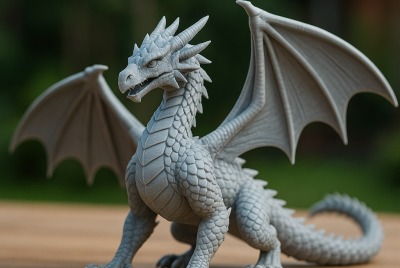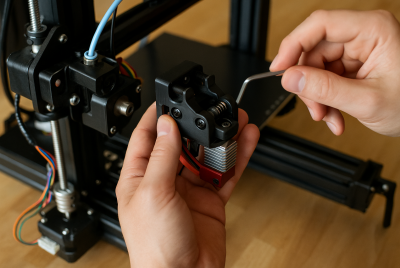5 Creative 3D-Printed Planters For Your Indoor or Outdoor Garden
Looking for a way to elevate your plant display with something a little more personal? 3D-printed planters are changing the game for home gardeners and makers alike. With just a printer and some creativity, you can design stylish, functional homes for your plants—and make your garden truly one of a kind.
Whether you’re an experienced hobbyist or just getting into 3D printing, this guide walks you through five stunning 3D-printed planter ideas to inspire your next project. Plus, we’ll explore their benefits, recommended products, and even some science-backed insights into how plant containers affect growth.
Why Choose 3D-Printed Planters?
3D-printed planters aren’t just about aesthetics—they offer customization, eco-friendliness, and affordability.
- Customization: Design your own shapes, drainage systems, or wall mounts.
- Eco-Conscious Materials: Many filaments are biodegradable or made from recycled sources.
- Affordability: Once you own a 3D printer, the cost per planter is low.
- Durability: PLA and PETG plastics hold up well for both indoor and outdoor use.
The best part? You can adjust every little detail to fit your plant’s needs and your home’s personality.

1. Geometric Wall Planters
Looking to add a modern touch to your space? Geometric wall-mounted planters are a sleek way to bring greenery indoors—especially in small apartments. These often feature sharp lines, hexagonal patterns, or cube-inspired shapes.
Why it works: Minimal surface space needed and great for succulents or trailing vines.
Design Tip: Print with white or gray PLA filament for a clean, Scandinavian look.
🛒 Try this:
JAYO Matte PLA 1.75mm 3D Printer Filament – matte finish gives your planter a premium vibe.
2. Self-Watering Planters
Forget the fear of overwatering. Self-watering planters use two chambers: one holds water, the other lets the soil draw up moisture as needed. These are perfect for busy plant lovers or forgetful waterers.
Bonus: They’re also great for herbs and tropical houseplants.
Pro Tip: PETG filament is more water-resistant than PLA and holds up better over time.
🛒 Top choice:
Overture PETG Filament 1.75mm – perfect for long-lasting, water-holding designs.
3. Animal-Inspired Planters
Want a planter that makes people smile? Try a cat-shaped vase, an elephant pot, or even a dinosaur. These whimsical designs are popular among Etsy sellers and are surprisingly simple to print.
Where it shines: Kid-friendly spaces, gift ideas, and statement pieces.
Design Tip: Add textured surfaces to mimic fur, scales, or wrinkles.
🛒 Helpful accessories:
ANYCUBIC Photon Mono Resin Printer – ideal for high-detail animal prints.
4. Modular Stackable Planters
Perfect for vertical gardens or balcony growing. These planters interlock, allowing you to build up or out depending on your space. Create as many modules as you need, then build them up into your perfect vertical setup!
Great for: Strawberries, leafy greens, herbs, and even small flowers.
Flex Factor: Stack, rearrange, and reprint more as your garden grows.
🛒 Recommended gear:
Creality Ender 3 V3 SE – affordable, reliable printer for high-volume projects.
5. Minimalist Desktop Planters
Looking to green up your workspace? Small desktop planters—usually round or oval with smooth edges—create a calm, clutter-free vibe. They’re ideal for succulents, air plants, or bonsai.
Where to use: Offices, bookshelves, bedside tables.
Printing Tip: Try dual-color or gradient filament to add subtle flair.
🛒 Printer-friendly choice:
SUNLU Dual Color Silk PLA – shimmery finish gives a high-end touch.
Designing Your Own Planter: Tools & Tips for Beginners
One of the biggest perks of 3D printing your own planters is full creative control. Whether you want a planter shaped like a geometric sculpture or one tailored to your plant’s specific root system, the process starts with the right design tools.
Beginner-Friendly Software
You don’t need to be a CAD expert to create cool planters. These tools are perfect for beginners and hobbyists:
- Tinkercad – Free, browser-based, and incredibly intuitive. Great for basic shapes and quick customization.
- Fusion 360 – A more advanced tool with precision modeling features—perfect for stacking planters or adding complex drainage systems.
- PrusaSlicer – Excellent for preparing your models with custom infill and layer settings tailored to planter durability.
Tips for Planter Success
- Always include drainage holes unless designing a hydroponic or self-watering setup.
- Use thicker walls (at least 1.6–2mm) for outdoor use.
- Opt for vase mode if you want to speed up prints for decorative-only planters.
- Test fit before scaling up—print a mini version to see how it functions with soil and water.
By learning to tweak your own designs, you open up a world of creative possibilities. From customized plant names embossed on the side to space-saving vertical gardens, it’s all within reach—no design background required.

Scientific Support for 3D-Printed Planter Design
Turns out, your 3D-printed planter choices aren’t just about style—they actually play a big role in how well your plants grow. A 2023 study on bioplastic 3D-printed pots using soybean by-products discovered that these eco-friendly containers not only reduced root circling but also performed better under dry conditions than traditional plastic pots. That’s a win for sustainability and plant health.
On top of that, a 2020 study published in HortScience found that planter shape can directly influence root growth and overall biomass. Specifically, containers with built-in ridges or unique internal geometries encouraged more expansive root systems and better water efficiency. With 3D printing, you can easily incorporate these features into your own designs—giving your plants a healthy boost while adding a personal touch to your setup. It’s science-backed gardening with a creative edge.
Conclusion
3D-printed planters combine form, function, and fun in one brilliant package. Whether you’re going for sleek geometry or playful animal shapes, the options are limitless. Better yet, you’re in control of design, scale, and material—making every piece a reflection of your creativity.
Ready to push your 3D printing skills even further? Explore the best multi-color 3D printers for vivid, pro-grade results and expand your gardening setup today.
FAQs
1. Are 3D-printed planters safe for plants?
Yes! Most filaments like PLA and PETG are safe for plants, especially if you don’t use additives. Always rinse planters before use.
2. What’s the best filament for outdoor planters?
PETG is UV-resistant and more weatherproof than PLA, making it a better choice for outdoor conditions.
3. Can I design my own planter files?
Absolutely. Use free tools like Tinkercad or Fusion 360, or download files from Thingiverse or MyMiniFactory.
4. Do 3D-printed planters need drainage holes?
Yes! Always include at least one drainage hole unless you’re printing a self-watering system.
5. How long does it take to print a planter?
Print times vary by size and resolution—small pots may take 1–2 hours, while larger, detailed pieces can take up to 8 hours or more.




